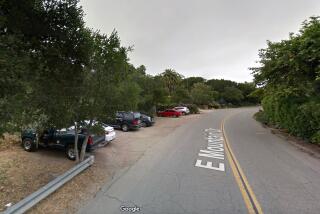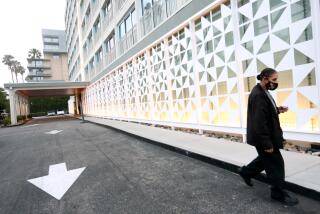After relocating oaks on protected land, a couple is on the hook for nearly $600,000
When Toni and Peter Thompson decided to build a new home on their 34-acre property, they wanted to make it and their surrounding buildings more beautiful by adding greenery.
The Santa Rosa couple didn’t look far. They hired contractors who excavated three heritage oak trees to move from one part of their land to another, including a very large, 180-year-old oak. But there was one problem: Part of their property was under a conservation easement, an agreement that was part of their deed to preserve the landscape in its natural state. The Sonoma Land Trust, responsible for enforcing the easement, sued.
In late April, a Sonoma County judge ruled in favor of the land trust and ordered the Thompsons to pay nearly $600,000 to an escrow account that will fund restoration of the damaged land.
The Thompsons “knowingly and intentionally violated multiple provisions of the easement on numerous occasions,” said Patrick Broderick, the judge on the case, in his ruling.
The Thompsons recently put their property— including the protected land and their neighboring ranch— on the market for $8.45 million.
The couple also hired a new lawyer and will be filing for a new trial.
“It appears, for a variety of reasons that [the Thompsons’] full story did not get told,” said attorney Richard Freeman. “We are hoping that there is a chance to present more information to the trial court.”
The conservation easement was placed on the property in 2009 by its former owners, who wanted to preserve the land’s untouched beauty. Conservation easements are voluntary and developed in partnership with land trusts. While the land can be owned privately, the easement becomes part of the permanent title record, according to the Sonoma Land Trust.
Staff members with the land trust found out about the work on the property in October 2014 and contacted the Thompsons, who said they were building a road to move the oak trees to their adjacent ranch, where they were building a new home, according to a complaint. Staff members saw that a large trench had been excavated around the tree and its roots, and a significant area around the tree had been damaged, the lawsuit said.
In the process, the couple removed 12 more trees, dredged a pond and spread the pond sediment — which was filled with invasive weeds — onto the property, the Sonoma Land Trust said.
Despite the trust’s efforts to explain the easement’s requirements to the property owners, Toni and Peter Thompson continued the work into 2015 and at times denied staff members’ entrance to the property, the lawsuit said. The land trust tried to make amends and gave them a notice that required them to come up with a restoration plan.
The court found that the Thompsons tried concealing their actions, resisted efforts to come up with a restoration plan and further damaged the property when they tried fixing it by planting nonnative vegetation.
“The significance of the outcome in this case cannot be overstated,” said the attorney representing the Sonoma Land Trust, Sarah Sigman. “Conservation easements are legally binding and people who purchase land under easement must understand that protecting these properties is not optional.”
The Associated Press contributed to this report.
alejandra.reyesvelarde@latimes.com
Twitter: @r_valejandra
More to Read
Start your day right
Sign up for Essential California for news, features and recommendations from the L.A. Times and beyond in your inbox six days a week.
You may occasionally receive promotional content from the Los Angeles Times.






